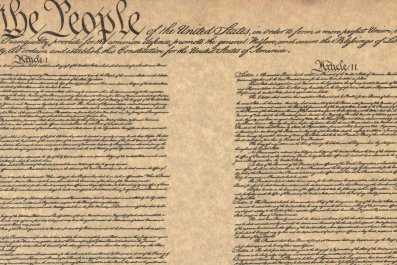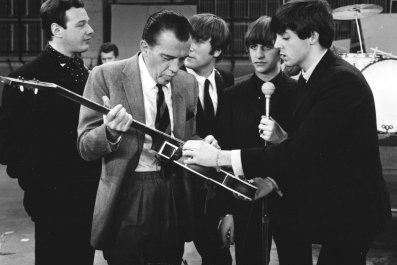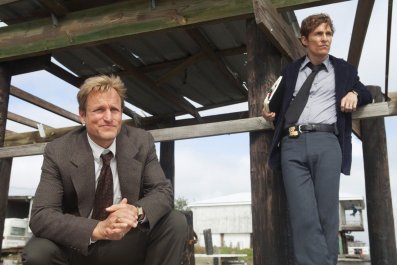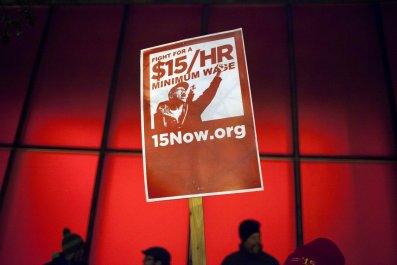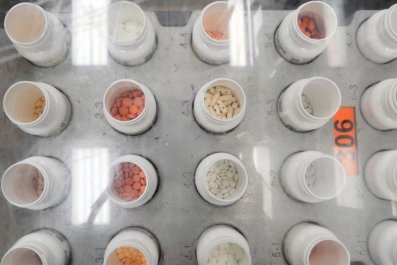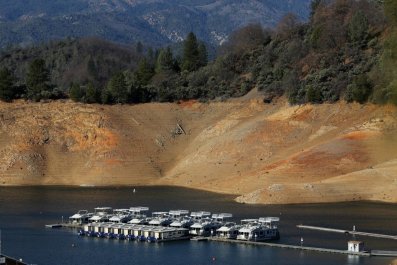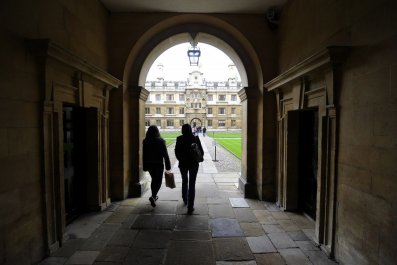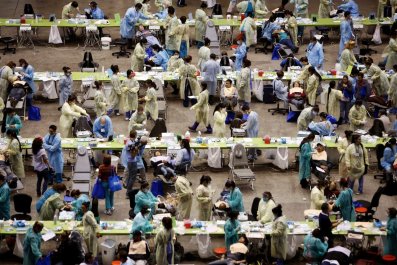For most people, the sight of hundreds of buffalo roaming through San Francisco's Golden Gate Park evokes memories of a time when massive herds of these imposing, furry beasts ranged freely on the North American continent hundreds of years ago.
But if the Indian Land Tenure Foundation has its way, that's also what the future will look like in many parts of the Great Plains. The foundation, a nonprofit organization that works on Indian land management, ownership and transference issues, has launched a plan to acquire 1 million acres spread out across North Dakota, South Dakota, and pockets of Oklahoma, Colorado and Minnesota. Between 1,000 and 2,000 buffalo would initially be introduced into this vast expanse to graze, roam and breed just like they did for thousands of years.
The foundation, based in Little Canada, Minn., soft-launched in December and hopes to raise about $10 million during the quiet phase of the campaign, according to Cris Stainbrook, the organization's president. Stainbrook told Newsweek he estimates that the campaign will need to raise about $100 million to buy all the land and the bison, but acknowledges that figure is a moving target, given the high price of land and commodities.
Though it seems backward-looking, the buffalo movement isn't driven by nostalgia. Officials say an abundance of buffalo meat could be a great health and economic boon to Native communities, many of which are plagued by obesity and diabetes.
For centuries, the buffalo played a central role in the lives of Great Plains Indians. Its hide provided shelter and clothing. Its nomadic nature (herds of buffalo graze and move on, graze and move on) helped shape the itinerant habits of some tribes. Its presence played a key role in their spiritual lives. And it was the primary source of healthy low-fat protein.
Then the European settlers on the East Coast headed west, and that tragic story has been well told many times and ways.
But the makeup of the Great Plains is in flux again. Many rural communities have lost significant population over the past century, a trend that continues as the Ogallala aquifer dries up at accelerated rates and farmers throughout America's heartland continue to see a decline in their wells. Some social scientists argue that the best thing to do is to herd people out altogether and turn the land over to buffalo: the Buffalo Commons movement, started in 1987, argues that the shift could revitalize agriculture in the Great Plains under a new, more sustainable model.
Though a project of that scale is not likely to happen in the next decade, smaller efforts to repopulate the buffalo are gaining real-world traction - particularly among Native tribes, who believe the return of the shaggy beast could be a boon for nutrition and health - and economic success - in their communities. To make it sustainable, though, they'll have to turn buffalo meat from a niche commodity to the kind of thing the average shopper could (and would) buy at the local supermarket. "We would like to see enough buffalo meat out there to bring the price down," says Stainbrook, adding that in some markets bison sells at a $12 per pound, while ground round goes for about $3.50.
Janie Simms Hipp, director of the Indigenous Food and Agriculture Initiative at the University of Arkansas School of Law, believes it's a reasonable proposition. "We have a greater demand that we have supply," she says. Hipp, a Choctaw who grew up in Oklahoma, believes that the strong ranching legacy of the tribes of the Great Plains can only help. "A lot of them have generations of people who have been ranchers," she explains.
The problem is that they likely don't have the startup funds to get a good bison ranch going. Compared to cattle, buffalo is much more expensive to raise. Worse, poverty dogs many Native reservations and business owners. On Pine Ridge, the nation's second largest reservation, the unemployment rate hovers close to 90 percent. That's why, in addition to acquiring land and buying buffalo, some of the money raised during the campaign will be used to provide direct financial assistance to Native cattle ranchers who have an interest in rearing buffalo or converting from cattle to buffalo.
If bison meat catches on, it could be the start of a dietary revolution in Indian country. According to Donald Warne, an expert on Native health and head of the public health program at North Dakota State University many reservations are food deserts, where there is an overabundance of junk food like chips and soda and little to no access to fresh fruits and vegetables. The plan is a great first step, Warne told Newsweek, but simply adding buffalo to their diets won't suffice.
"They also need access to healthier choices," Warne says. The food-desert syndrome coupled with poverty creates a public health disaster, where diseases like diabetes and obesity are rampant on the reservations. Warne says that in North Dakota alone Natives have twice the prevalence of diabetes as whites - but are six times as likely to die from it. Ensuring that residents have access to fresh fruits and vegetables, smart protein choices and taking a steps to reduce the amount of junk food sold could be a potent tool in the fight against obesity in these communities, he says.
Stainbrook figures it will take at least 10 years before the plan is fully under way. In the meantime, the foundation will commence work this year by providing grants and small loans to about 15 farmers for capital investments, such as fencing, holding pens and water areas for buffalo, which are stronger and less docile than cows, and not as easily domesticated. They also need plenty of acreage to roam - otherwise, their meat would become fattier, much like the beef that comes from penned-in cattle.
For Zachary Ducheneaux, a program manager at the Intertribal Agricultural Council, a Billings, Montana-based organization that promotes the use of agricultural resources for the betterment of Native peoples, that future can't come soon enough. "Right now, our people are eating whatever meat shows up in our grocery stores on the reservation," he says. "We have access to grass that grows the best cattle in our country, but we import 100 percent of our meat. Obesity is an epidemic on our reservations as is diabetes and all the ancillary diseases. We've got folks who are 50 years old and getting their legs amputated because of diabetes."




